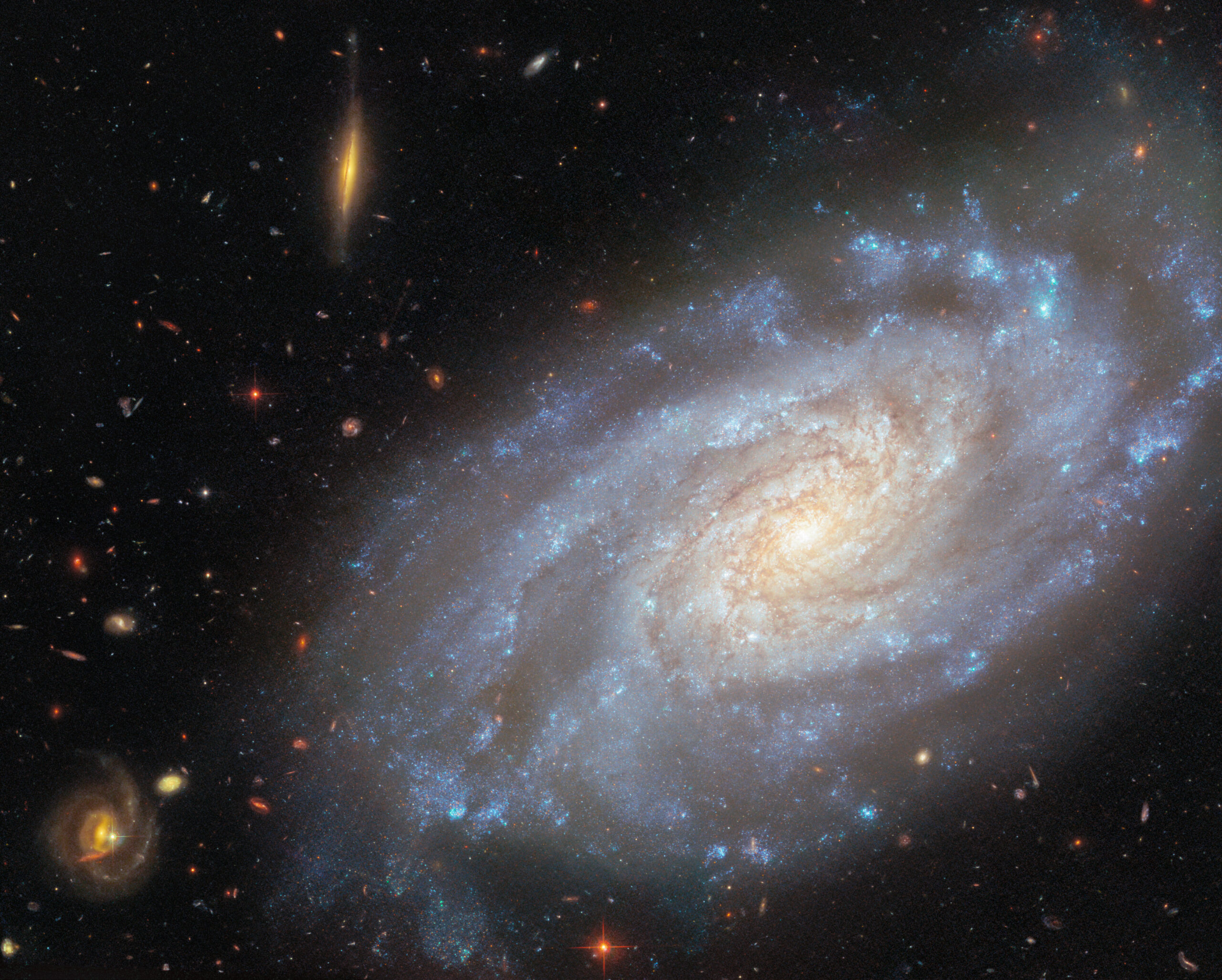
The latest ESA/Hubble Picture of the Week highlights a familiar face in the night sky: the spiral galaxy NGC 3370, located nearly 90 million light-years away in the constellation Leo. Astronomers have returned to this elegant galaxy time and again over more than
two decades for good reason: NGC 3370 is one of the best laboratories in the Universe for measuring cosmic distances.
NGC 3370 hosts two of the most important tools in the astronomer’s distance-measuring toolkit: Cepheid variable stars and Type Ia supernovae. Together, these “standard candles” underpin the cosmic distance ladder and allow scientists to track how quickly the Universe is expanding.
Cepheid variables rhythmically swell and shrink in size, changing in temperature and brightness as they do so. Their pulsations follow a simple rule — the brighter the star, the longer the cycle of variation. By timing those changes and comparing a Cepheid’s true brightness to how bright it appears from Earth, astronomers can calculate its distance with remarkable precision.
Type Ia supernovae offer another rung on that distance ladder. These stellar explosions occur when a white dwarf (the dead core of an otherwise normal star) suddenly reignites in a catastrophic burst of nuclear fusion. Each explosion shines with almost the same peak luminosity, so by measuring how bright the flare appears, astronomers can estimate how far away it took place. Observations of Cepheids and Type Ia supernovae, when combined, have become essential for refining the Hubble constant, which describes the rate of the Universe’s expansion.
Hubble first released an image of NGC 3370 in 2003, shortly after it became a key target in efforts to calibrate the cosmic distance scale. The newly released view revisits the galaxy in far greater detail, incorporating additional wavelengths of light not included in the original image. The result is a richly textured portrait that reveals new layers of dust lanes, blue-white clusters of young stars, and the delicate structure of NGC 3370’s spiral arms.
NGC 3370 is part of a small galaxy group that also includes NGC 3447 and NGC 3455, both previously studied by Hubble. Together, they form a striking reminder of how the same galaxy can continue to illuminate our understanding of the vastness of space — and the pace at which it’s expanding.
